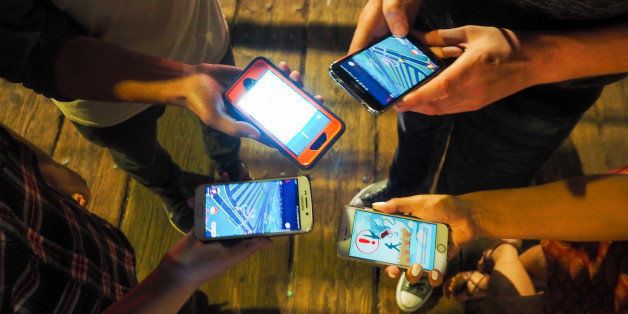
Gather around, kids. Grandma's going to tell you how all the Pokéstops were born.
As the zillions of you chasing Pokémon this week have discovered, there are some truly shitty ones. Everyone's blaming the developer, Niantic Labs, for this, assuming -- understandably -- that the game developers thought places like the Holocaust Museum would be a great place to capture Squirtles. But the story's more complicated than that.
Ages ago (in late 2012), Niantic launched another augmented reality game called Ingress. Like Pokémon GO, Ingress features sites you can visit and gather items from; they're called "portals." When Ingress launched, the world had been seeded with lots of portals on libraries, fire stations and historic sites. But Niantic invited players to "discover" many others and submit them for approval. Players went a little overboard. They submitted anything and everything -- many more than Niantic could handle.
Certain criteria were supposed to apply: they had to be cool sites with an interesting history, eye-catching murals or public art, or local "hidden gems" that visitors wouldn't otherwise find. They also had to be persistent, not temporary. But Niantic applied these criteria a bit haphazardly. The Holocaust Museum obviously fits the bill. But, somehow, so did nondescript bus stops, lawn ornaments, snowmen (made of actual snow) and cups of coffee.
Snowman portal located west of Lake Tahoe, in California.
Predictably, Niantic's portal-submission process became backlogged. Submissions weren't approved for weeks or months, if at all. Then, the company made matters worse by offering players in-game badges for getting certain numbers of portals approved. Its approval team (if, indeed, it was a team and not just one glazed-eyed person staring at a computer 24/7 and clicking "approve" and "deny" at random) was swamped. And so Niantic took away the ability for players to suggest new portals at all.
Over time, the real-world sites of some of these portals have closed, moved, burned down, or otherwise ceased to be. Ingress players can still suggest that a portal be moved or removed, but Niantic's response has been, well, less than responsive.
Now Pokémon GO is here and, guess what? The Pokéstops are based on Ingress portals -- down to their wacky names, non-sequitur descriptions and, in many cases, questionable validity. It's no surprise that Pokemon Go players are confused by some of the stops, or wondering why they can't find some of the real-life spots they're based on. And it's no wonder that so many people and businesses are perplexed by the numbers of players visiting them.
So, yes, Niantic is partly responsible for the fact that there are Pokéstops on the art in Subway sandwich shops and rusty fire hydrants. But so are opportunistic Ingress players who wanted more portals near them.
You're welcome.
A version of this post originally appeared on Medium.
Also on HuffPost: